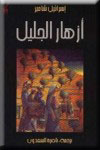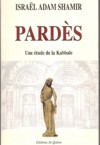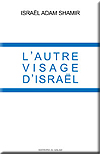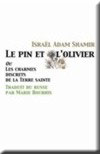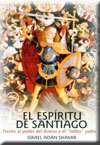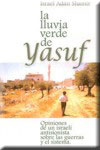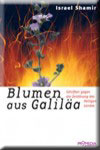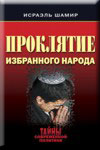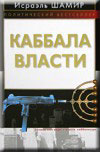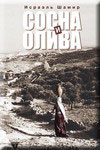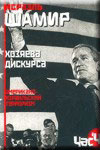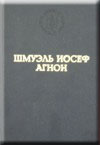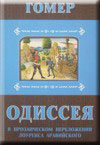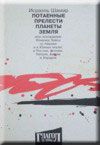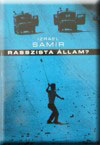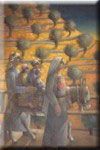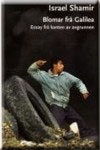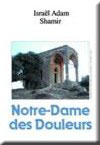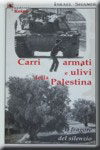[Review of Simon Goldhill’s book Jerusalem. City of Longing, published in a E. Michael Jones’ Catholic monthly Culture Wars]
Walking About Jerusalem
Israel Adam Shamir
Jerusalem is a wonderful city to walk about, enjoying its perennial blue and high sky, its warm and pure mountain air, cool and refreshing shades, delicious water, listening to the church bells and muezzin’s calls. I walk it almost every day, and the Old City shopkeepers and artisans call me out, “Ahalan, Shamir!” They all know me because I am a guide, guiding discerning travellers about town. My lot is enviable: instead of shepherding an unruly busload of accidental tourists, I accompany families or single people who want to discover Jerusalem and to find its hidden spiritual treasure. I am the first witness of their tears of joy as they leave the empty tomb of Christ, I comfort them in the Gethsemane, and I share with them my excitement in the Noble Sanctuary. I walk the young through the narrow place of Siloam Tunnel, I sit with the mature in the Pasha Garden of the American Colony, and I drive all of them to the Mount of Olives.
We guides are quite a friendly lot, friendly to tourists and friendly to each other. It was my pleasure to review a guidebook Jerusalem. City of Longing written by Simon Goldhill, who for sure loves Jerusalem. This is his second book on the city; the first one was dealing with Jerusalem temple. I also wrote a book about the Holy Land, as many guides do, so I am aware of pitfalls and I do not know him personally, though his face looks rather familiar with its nimbus of curly hair. He is a professor of Greek literature in Cambridge . And this is another feather in his cap in my eyes for I happen to belong to the Greek Orthodox Church of Jerusalem and moreover, I had translated Homer’s Odyssey. The book is a beautifully printed and impeccably designed reading book, aiming to explain Jerusalem to a not-very-religious visitor, and it provides quite pleasant reading material. There is wealth of interesting quotes and nice stories; the author is a man of learning who tries to be fair.
Regretfully, the book is under-edited, often biased, and has too little religious feeling or even understanding of Christian sentiment towards Jerusalem. It is disappointing to find a physically perfect book so full of misleading misprints that even a superficial editing would eliminate. Author writes: “Herod Agrippa extended the city walls in 414” – should be in AD 41-44. Impossibly for a Professor of Greek, he misspells Pantakrator (should be Pantokrator). He is loose with references. He attributes to Golda Meir the battle-cry of early Zionists “Land without a people for a people without a land”, which was actually coined some fifty years earlier by Israel Zangwill, if not by an earlier and obscure personality.
The Holy Sepulchre
Goldhill’s description of the Holy Sepulchre is marred by his lack of religious feeling towards it. He brutally calls it “small, brown, and undistinguished as a duck.” (He finds the Wailing Wall, however, “an impressive edifice”). He quotes at length various 19th century English Protestant visitors who disliked the church, a useful device for writers who do not dare to expose their own bigoted opinion. He finds it necessary to refer to the blessed saint and myrrh-bearer as “Mary Magdalene, the former prostitute”, a language meant to offend. Silly, too – there were no prostitutes before advent of capitalism, as a Cambridge professor should know.
He is unfair to the beautiful and touching ceremony of the Holy Fire, celebrated on Easter Saturday according to Julian calendar: “reaction of the community is startling, even frightening”. I participated in the ceremony many times, and always found it uplifting and exciting, though frequently marred by heavy-handedness of the Jewish police.
In the Holy Sepulchre, he notes that “one of the chants regularly heard in the 19 c was: Oh the Jews, your feast is the feast of devils [rather, ‘demons’ according to St John Chrysostom – ISH] and our feast is the feast of Christ”. Goldhill misses the point: in 19th century, the Christians and the Jews were two competing and quarrelling ancient minorities in the Muslim sea. Jews were as powerful, and often more powerful than the Christian communities, and the Jewish prayers (in 19th century as well as today) are at least equally offensive to Christians. For instance, the Jewish Paschal narrative includes a call for Divine vengeance being poured on Christians and describes Crucifix as idol.
In the Parvis of the Holy Sepulchre he asks the reader to remember “the fact that until 1967 no Jew was allowed even into the parvis.” A man of his – and our time and space, Goldhill does not even understand that people may be serious about their religious feelings. A traditional believing Jew – and there were no other Jews until fairly recently – would never enter a church, including its parvis, or inner court. For a believing Jew, the prohibition Goldhill mentions is as painful as a prohibition to patronise a pork butcher. If a religious Jew would find himself in the parvis, his faith would demand him to keep his hat on, to curse the place and spit in its direction. (Nowadays, Jewish fanatics often try to come near a Christian religious procession in order to spit at the Cross.) Goldhill does not remind his reader that nowadays Jewish security guards would not let an Arab enter the Wailing Wall plaza, and they would demand from a Christian to remove or hide his cross “in the interests of keeping peace”, like they demanded from the Pope.
The beautiful Crusader lintels of the Church were taken in 1929 to Palestine Museum for repairs, and never returned. “The museum has constructed excellent replicas… but the Greek Orthodox patriarchate blocked the return (? - ISH) of the lintels” – writes Goldhill. I wonder whether he would accept “excellent replicas” instead of the real thing if he were an owner. Introduction of fake replicas can not be described as “return of the lintels”. This is not unusual turn of events – museums all over the world are reluctant to return art to its owners, if the owners are Christian churches. They do return everything to Jews, in a jiffy, but with the churches they always find a reason to keep it.
The Wailing Wall
Dr Goldhill declares his intention to be fair; and he wants his reader to notice this effort. He stresses frequently that he does not want to embrace one of the competing narratives, nor does he wish to “slip into the aggressive and naïve stereotypes of identity politics: he is a Jew/Arab/Muslim/”; he would like the book “to stand out against such reductive and coercive postures”.
One applauds his intentions, were they supported by actions. However, declarations aside, he slips into “the aggressive and naïve stereotypes of identity politics” pretty soon. On p. 71 he improbably claims that “some recent Muslim writers deny that there ever was a Temple [of Solomon]… their claims are so obviously motivated by a desperate contemporary ideological need to disprove any connection between the Jews and the land of Israel and the Temple Mount in particular that it would be unnecessary to take them seriously, if such myth writing did not add to the entrenchment of violent extremism in the region”.
This is worse than stereotyping, this is ignorance. Who is “myth-writing” – scholars who interpret real finds on the ground or writers who just follow the Good Book? Practically all modern archaeologists – including mainstream Israeli Jewish ones - doubt that there ever was a Temple or a kingdom of Solomon; but leading doubters, nay, deniers, are not “Muslim writers” who tend to affirm this part of Biblical narrative for reasons of faith (Solomon is mentioned favourably in Koran), but lay scientists, British and American, beginning with Copenhagen University Professor Thomas L. Thompson, “one of the world’s leading Biblical archaeologists”, who wrote: “There is no evidence of a capital in Jerusalem; nor do we have evidence for any temple at Jerusalem in this early period.” Other leading scholars of similar views are Niels Peter Lemche, Keith Whitelam, and Philip Davies, hardly Muslim names.
One does not have to agree with them; one may narrate history of Jerusalem according to the Bible, disregarding archaeology, as Goldhill does. Many guides do so, and this makes sense: a guide in Camelot should not debunk King Arthur stories. But his attribution of the archaeologists’ views to some “Muslim writers” smacks of prejudice, while claim that “it would be unnecessary to take them seriously” implies deep ignorance, for the world does take them seriously indeed. While there is a law banning Holocaust denial, there is still no law forbidding denial of Solomon’s Temple. Though Goldhill’s mentor, Dr Dever (“Plague”), an important Jewish American archaeologist of elder generation, already has claimed that these deniers are antisemites, our Dr Goldhill made it one better by implying that they are terrorist supporters.
Goldhill’s understanding of modern, as well as ancient history is somewhat deficient. He thinks that the conflict between quarrelsome Catholics and Orthodox in the Holy Sepulchre has been so severe, that in 1852 Sultan was forced to establish the Status Quo agreement. Reader may wonder why it hadn’t happened in preceding hundreds of years. Goldhill does not tell that the Status Quo was established because of the foreign powers’ meddling (with Russia supporting the Orthodox, France supporting the Catholics and England playing its imperial game) brought forth the Crimean War and endangered Turkey . Local quarrels were not all that bad and they would never force the Sultan’s hand.
Sometimes, Goldhill’s elegant writing seem to be inspired by the IDF spokesmen’ terse prose. The Herod’s Massacre of the Innocents “is blamed” on Herod, (by some antisemites, presumably, eager to blame a Jewish ruler). A la present Israeli foreign minister Lieberman, he stresses that “the Mufti, the Arab religious leader of Jerusalem, became a close ally and supporter of Hitler”, but he avoids mentioning Mufti’s Jewish contemporaries, Arlozorov, the Zionist Labour leader, who went to Berlin to embrace Hitler and to sign the first trade agreement with Nazi Germany on behalf of the Yeshuv (the Zionist Jewry of Palestine), or Yitzhak Shamir, a future Prime Minister of Israel, who wrote sycophantic letters to the Fuehrer. Many people supported Hitler in these days, or hoped to be supported by him – especially if they were dissatisfied with the British Empire’s way to run things.
During 1929 riots, “135 Jews were murdered, 116 Arabs were killed”. This is so typical: Jews are always “murdered”, goyim are just “killed”. In accordance with the Jewish interpretation of the Decalogue, only a Jew can be ‘murdered’. Goldhill accepts the Zionist narrative: he refers to “Jewish worshippers [who] wanted to take some chairs for the elderly” as the reason for the riots. It is well established that the 1929 riots were instigated by the Zionist wannabe-Maccabees, and a good contemporary description of it is given by an American journalist based in Jerusalem Vincent Sheehan. It is quoted at length by the best single book on the subject, the Guardian correspondent David Hirst’s The Gun and the Olive Branch, Faber and Faber, 2003. This was also the conclusion of official enquiry.
With callous disregard, Goldhill writes about destruction of the Mughrabi Quarter of the Old City in 1967: “some two hundred very poor [Palestinian] dwellings… were cleared away in order to open the plaza in front of the Wall for the thousands of new [Jewish] visitors”. No empathy to these poor – and not so poor people whose only crime was to possess something the Jews coveted. He does not tell us that so many dwellers were buried alive under the ruins of their houses by raging bulldozers. With equal disregard he tells of destruction of a girls’ school for orphans that stood nearby. Goldhill does not notice that it undermines his own story: what began as “some chairs for the elderly” continued as “slum clearance” of hundreds of houses, and it still waits for the grand finale of the temple building on top of the mosque’s ruins.
With Bernard Lewis-style cheap sophistry, Goldhill evokes “14th century Persian Islamic art which had no problem with representing the Prophet – despite the vitriolic (sic! – ISH) response to modern drawings of Muhammad by contemporary Muslim protesters”. By “modern drawings of Muhammad” he means the insulting cartoons published by the Danish Jewish Neocon editor, forsooth a fitful comparison with 14th century sacral art! Interestingly, the Jews had no problem with representation of the Holocaust in sculptures and paintings of the Holocaust Museum – and they gave quite a vitriolic response to modern drawings of Holocaust in the International Holocaust Cartoon Competition.
The Noble Sanctuary
Goldhill is an expert on the Jewish temple and he is expectedly partial to it: he tells of Jewish dreams to have it rebuilt, of Pompey who walked into the Holy of Holies, “expecting to see a glorious statue”. Actually, Pompey and his contemporaries expected to find there a donkey’s head. The temple built by the bloody tyrant was outdated even as it was constructed: a Hindenburg Zeppelin, the last great dinosaur - for the long era of animal sacrifices, of slaughtered sheep and goats was over. The Jerusalem temple never was rebuilt because there were no Jews keen on going back into sacrifices – but Goldhill does not even understand that.
Speaking of the Herodian temple, Goldhill tells of “perhaps the most evocative new inscription to be found in Jerusalem, saying ‘to the trumpet-call building’”. In my view, the most evocative new inscription found there reads "No Gentile may enter beyond the dividing wall into the court around the Holy Place; whoever is caught will be to blame for his subsequent death." One would think that Goldhill, who noticed that Jews were not let into the Church of Holy Sepulchre, should notice this inscription in Greek he knows.
If he fails with the Christian holy sites through lack of feeling, he fails the Muslim sites due to lack of historical perspective. He writes: “the Dome of the Rock was built to express Muslim supremacy over the Jews by building on this site”. Wrong. In the glorious days of Umayyads, Muslims had no need to waste time and effort to express supremacy over the Jews, for the Jews were of very little importance. They were yesterday’s threat and yesterday’s people, small and nasty, rather inconsequential if anything. For a modern professor from Jewish-dominated academe such a thought just could not occur, but Jews practically disappeared at that time. Some embraced Christianity, others embraced Islam, negligible numbers faded away in the steppes to the north of Caucasus or in the fringes of Sahara . Seventh-century Caliphs would sooner express their superiority over mice.
The Muslims, and the Christians, and the Jews did compete over legacy of the Children of Israel, semi-mythic people described in the Bible. All of them claimed they are the rightful heirs of Abraham, Moses, Solomon. By building on the Temple Mount, the Muslims proclaimed their theology of continuity and supercession. Islam did not position itself as a new faith, but as a return to true faith of Abraham, Moses, Solomon, supposedly distorted by Jews and Christians.
By building the Noble Sanctuary on the place of Solomon’s Temple, the Muslims had “rebuilt the Temple”, fulfilling dreams of the Jews – and that is why the vast majority of Jews had accepted Islam. Haram a-Sharif, or the Noble Sanctuary is the Temple Rebuilt . Until 19th century, this was the predominant thought. That is why the Crusaders called it Templum Solomonis, and so did the Jews. On the Eastern wall of an 18th c synagogue in Safed, the Temple is depicted: and it is the Dome of the Rock. A Columbus contemporary, a Renaissance Jewish historian Abraham Zacuto (whose book I translated) also considered the Dome as the Temple rebuilt. Only in 19th century there was a paradigm shift, and Jews began to consider a new rebuilding.
“Muslims are instructed to make pilgrimage to the three holy cities of Mecca, Medina and Jerusalem”, writes Goldhill. It would be nice! We’d have more tourists and pilgrims. Though one may find a Hadith transmitted by Abu Hurairah and included by Bukhari calling upon Muslims to visit Jerusalem in the name of the Prophet, it never became a commandment on a par with hajj to Mecca . In different times, Muslim pilgrimage to Jerusalem was more or less popular; rising to the top in Umayyad Caliphate, but since then, Jerusalem did not compete with Mecca, the only Hajj place.
Outside of Old City
Goldhill expresses progressive views; he is quite a reasonable liberal man of Obama and Blair’s days. Not a fanatic, not a Jewish Nationalist-Likudnik. The book was endorsed by a Palestinian professor, Sari Nusseibeh. Goldhill sticks to the left-Zionist narrative, even if it means adhering to a factual error.
* “Palestinians complain bitterly of what they term the ongoing ‘Judaisation’”, he says. However, the term is not theirs – ‘Judaisation’ (or ‘Yehud’ in Hebrew) is the official Zionist policy, freely used and espoused by Israeli Jews.
* Hamas would bar any Jew from owning any property in Palestine , he writes. He does not tell us that religious Jews would bar any non-Jew from owning any property in Palestine, as well.
* He calls the Deir Yassin murderers – “Israelis”. The correct term is “Jews”, as the massacre took place in April 1948, before the state of Israel was created.
* In the same sentence, he refers to Jewish “violent underground groups” and Arab “terrorist groups”, though the Jews did not mind the name of ‘terrorist’ being attached to them.
* In late 19th century, population of Jerusalem was predominantly Jewish, he writes. This is true, but the Jews were not citizens but foreigners. Likewise, during important holidays population of Santiago de Compostella or Canterbury consists of foreigners.
* The last German settlers were deported by the British, he says. No, the last ones were murdered by Jews in the wave of ethnic cleansing.
Such small but annoyingly tendentious statements are plentiful. There are many places in Jerusalem which are “must” and he misses them. The Mount of Olives, Talbiye, Monastery of the Cross are very relevant and important for a non-Jewish visitor, while a visiting American Jew usually is satisfied with seeing the Wailing Wall and the Holocaust Museum .
Let us conclude: it is a reasonably good book for a liberal British or American Jewish visitor to Jerusalem . The best for a Catholic reader or a pilgrim is the exhaustive, many times republished, guide book by Fr. Eugene Hoade OFM.
------------ ---
Israel Shamir is an author of the Pine and the Olive, a comprehensive guide book for Jerusalem and the Holy Land , available in Russian and French. Besides being a writer, he is a practicing guide for tourists and pilgrims in Israel/Palestine. His email is Israel.shamir@ gmail.com
Goldhill replied:
Dear Culture Wars,
Shamir's review of my book "Longing for Jerusalem " is so
hysterical, ill-informed and biased that it is barely worth replying to.
"Silly", he sniffs, "there were no prostitutes before
capitalism, as a Cambridge Professor should know". Hmmm.
This Cambridge Professor wonders what all those Greek, Latin and Biblical
descriptions of prostitutes are on about.
But I am afraid that that sort of bizarre, patronizing and ignorant comment is
the level of the review's discussion.
Typically, he triumphantly quotes Thomas Thompson that "nor do we have
evidence for any Temple at Jerusalem at this early period", and declares
that I am thus guilty of ignorance and stereotyping for suggesting that Muslim
claims that there was never any Jewish Temple in Jerusalem, are politically
motivated. What I wrote was (71): "There is no material evidence existing
today for the First
Temple or for its destruction".
Sounds a bit like Thompson, no? I add (71) "sceptical historians have not
found it hard" to argue that the wonderful golden Temple was " a
dream of a glorious past for a downtrodden people". Which
is what "most modern archaeologists" believe. I then add that
the denial of any Jewish Temple in Jerusalem ,
a very recent Muslim argument, is politically motivated. After all, there
simply was a very old Jewish Temple there in the first century BCE which Herod
rebuilt. To deny it is not historically respectable.
The guide, like
most guides, seems to see only what he has been trained to see. So he rants
that everyone knows that the riots of 1929 were "instigated by Zionist
wannabe-Maccabees", and I must be spouting IDF
propaganda to deny it. Oddly, what I wrote (80) was "In 1929, with equal
calculation, Jews marched to the wall and waived Jewish flags and made
nationalist speeches; Arabs, fired up by a bloodthirsty speech from the Mufti,
responded...". My vocabulary is more dignified
than his, I admit, but I am not sure why he thinks I am in denial. I think he
is just very angry, and needs to read what he thinks I must have wanted to
say...
So when I said that the massacre of the Innocents is blamed on Herod, it had
nothing to do with anti-semitism as he wildly
asserts: it is a point about the unreliability of historical sources about
Herod. (Does any modern historian believe that the Massacre of the Innocents is
a historical event?). When I said that the Mufti was a supporter of Hitler and
Nazi policy, it is part of an argument about why he was exiled after the war
and the failure of Arab leadership, and has nothing to do with Lieberman, a man
I had not even heard of when the book was written! And so on. The review is a
mess.
And of course some of the motivation for such bad faith writing comes across.
Partly in his upset that I, like many visitors, do not share his feelings about
the Church of the Holy Sepulchre. But perhaps most bizarrely in his two claims
that the Jewish population of Jerusalem in the
19th century were just "foreigners" (like Christian pilgrims at Campostella) but also that the Jews in 19th-century Jerusalem "were as
powerful and often more powerful than the Christian communities.". He just doesn't like the fact that the Jews were an
absolute majority of the population living there, some of whom were immigrants,
others long-resident families.
You can't write about Jerusalem
without getting involved in politics, even and especially when writing about
the past. In Jerusalem ,
someone will shout at you for any expressed opinion. I end the introduction to
my book by saying "I will just say that I have tried to be equally
insulting to all parties". At very least I seem to have succeeded with
Shamir.
Okay?
SDG
Shamir responds:
No, it is not okay, Prof Goldhill. The problem is not the mental attitude of this reviewer, but real faults of the book mirrored in your response.
- One of them is certain shoddiness, lack of care. This is felt in your response as well as in the book. Every writer should check spelling, dates and facts, before sending to print. In the book, there was an impossible spelling of “Pantakrator” (instead of Pantokrator). In the response, an equally impossible misspelling of “Campostella” (should be Compostela). If this is dyslexia, use speller-checker.
- Check historical facts. In the response you express wish to explain “why [the Mufti] was exiled after the war”. You may learn that the Mufti had to escape before the war, in 1937, and never made back to Palestine . The Jews did not even allow his body to be brought for burial in the city they seized meanwhile.
- You can’t believe the Jews “in the 19th century Jerusalem were as powerful and often more powerful than the Christian communities”. Apparently you are taken in by the fairy tale of Jews being poor, persecuted and wretched. However, fairy tales aside, we have many witnesses of Jewish influence in 19th century Palestine . The richest man in the land was Farkhi, a Jew who “had more money than the Bank of England”. Jews have occupied important positions in Istanbul at the Sultan’s Court, and were as ready to help their coreligionists in Jerusalem , as the US and British Jews are today. European powers competed who would show more generosity and patronage towards Jerusalem Jews. For this reason, Jerusalem Jews indeed preferred to keep their foreign citizenship and did not become local citizens. For the same reason they could not buy land: very few houses and very little land in Jerusalem area actually belonged to Jews. Not that they cared: majority of 19th century Jerusalem Jews were old men who came to die and be buried in the Holy Land .
- You want to prove you are not in denial of the cause for 1929 riots, but in your own words, Jews have made “nationalist speeches” while Arabs were “fired up by a bloodthirsty speech”. Jews are merely “nationalist”, Arabs are “bloodthirsty”…
- You think there were prostitutes in ancient “Greek, Latin and Biblical” milieu. I wonder whom you have in mind, women like Aspasia or Thais? If they should be called “prostitutes”, one may call King David and Agamemnon - “mafia dons”, or “top gangsters”. Certainly, there were loose, sexually voracious women and men in those days, but before capitalism and advent of money as universal equivalent, no prostitution in modern sense was feasible. But this is beside the point.
- St Mary Magdalene in her youth “gave herself wholly to the pleasures of the senses”, in words of de Voragine’s Golden Legend, but nothing – in the Gospels or in Tradition - hints or implies that she did it for pecuniary gain. Christ said that all her sins were forgiven her, because she loved much, and this reasoning does not agree with the sordid picture drawn by Prof Goldhill. One must be too Victorian even for Cambridge to consider every woman who had extramarital relationship – a prostitute. Moreover, both Christian and Jewish traditions forbid reminding misdeeds of a repentant sinner.
- St Mary Magdalene is an object of intense love and veneration for the Christians. They remember that Christ admitted her to His friendship, dwelt in her house and defended her, that she stood at the foot of the Cross, anointed His dead body and was the first witness of the risen Christ. For us Christians she is not dead because saints are assured of eternal life.
- A man who intends to write about Jerusalem must understand that he deals with the live wire of live faith. “I have tried to be equally insulting to all parties (says Goldhill), at very least I seem to have succeeded with Shamir”. Insults mean nothing, but he drops his insults so casually, without even comprehending their severity, that this insensitivity disqualifies him from writing about Jerusalem . For this is not a fiery book written by iconoclast, enemy of the Church, or a Voltaire – neither by tormented suffering soul seeking God. It is a tepid book by insensitive liberal, and “because you are tepid – neither hot nor cold – I shall spit you out of my mouth” (Rev 3:16).
- But I do not want to conclude on this severe note, for surely not everything is lost. I applaud Goldhill’s honest and rather decent response; he is certainly a man of good intentions. If he will consider our remarks and correct his attitude, the next edition of the book may be more successful.
Israel Shamir, Jaffa



